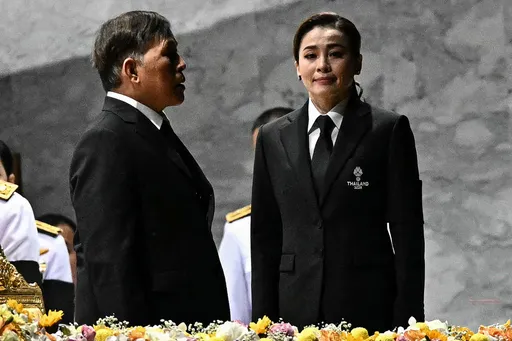Resentment and sadness. That’s what is in the air in Iran these days, after a Ukrainian passenger plane PS-752 en route to Kiev crashed near Tehran on January 8, killing all 176 people on board.
The news about the crash came hours after Iran announced that it had launched a retaliatory missile attack against the US in Iraq as Tehran had promised to take a “harsh revenge” over the recent assassination of Major General Qasem Soleimani, the commander of Iranian Revolutionary Guard Corps’ Quds Force.
Iranian aviation authorities quickly blamed the crash on technical problems, strongly denying speculation that the airliner had been shot down by a missile. But that all changed three days later when the Iranian military admitted to “mistakenly and unintentionally” shooting down the plane, blaming “human error”.
The Iranian public which was still reeling from the horror of a looming war between Tehran and Washington on one hand, and mourning the tragic death of many innocent countrymen on the other, woke up to another shock on Saturday morning.
“When I read the [the military’s] statement, it was hard to believe. I read it twice to understand what has happened. I felt shocked, consternated and angry. Sadness and grief for all those people including children who lost their lives, and fury over the concealment of what had happened,” an Iranian journalist speaking on the condition of anonymity told TRT World.
It was clear at this moment that a wave of criticism, anger, and grief had gripped the public. While some described the downing of the aircraft as unbelievable and embarrassing, others called it shocking.
Fingers are pointing at the Islamic Revolutionary Guards Corps (IRGC) whose Aerospace Division took responsibility for the fatal mistake. Despite the IRGC’s apology and promise to conduct a thorough investigation about the incident, the explanation and apology have failed to appease those demanding transparency and justice.
“I still feel angry and have a lot of questions. But no one answers them. Giving explanations and making an apology is not enough”, the interviewed journalist added.
With nearly no local media reflecting the viewpoint of those critical of the Islamic Republic, many Iranians have in recent years turned to social media to criticise the system or to express sorrow and sympathy in the face of major tragedies.
However, sentiment over the tragic plane crash transformed after the real cause of the incident was announced. Since then, many have lamented the state over its “harsh revenge” for the January 3 killing of Soleimani, arguing that the revenge had backfired and hit innocent Iranians.
A significant number of personal and public pages as well as celebrities and writers, among others, changed their profile pictures to full black, a black Iran map reading “condolences my Iran” or “#176” written on a black background which refers to the number of people killed in the tragic incident.
Others plastered their social media pages with images of the plane crash site as well as pictures or videos of the victims including a student couple who had come to Iran to celebrate their wedding just a few days ahead.
Other posts included comments strongly critical of the IRGC’s handling of the situation while others accused it of telling “lies” and refuted its explanation of mistaking the passenger jet with a cruise missile.
Anger and grief rises to the top
However, the expressed grief and sadness were not limited to virtual social networks only. On Saturday afternoon, hundreds of Iranian, mostly college students, took part in vigils across Tehran as well as in front of several universities, including the Amir Kabir and Sharif universities.
Several victims of the Ukrainian flight were the alumni of top Iranian universities. The vigil in front of the Amir Kabir university soon turned into an anti-government protest when angry mourners shouted slogans against the ruling system. Protesters were dispersed by heavy security forces.
Protests have continued across Tehran and other major cities but have mostly been limited to universities. Samira is an accountant working at a private company in Tehran. She attended a demonstration at the landmark Azadi Square on Sunday.
Speaking to TRT World, she recalled what happened during the rallies there. “Not many words on those killed in the crash. People were mostly hopeless, filled with a suppressed anger, with their eyes showing hatred towards the security forces present,” she said.
Recalling the situation at Azadi (meaning freedom or liberty) Square, Samira added that the security forces used an excessive amount of teargas to disperse the crowd. “They [security forces] closed the doors of the metro station there and beat people inside. People reacted by chanting ‘Death to Dictator’.”
The pressure of negative public opinion has been widely felt by officials across the government and other governing systems in Iran. It was only after the announcement of the cause of the flight crash that Tehran’s municipality dedicated a number of its billboards across the town to commemorate the victims.
In this vein, several singers, actors and actresses as well as directors and artists have expressed their anger at the way the truth has been revealed through different gestures such as cancelling concerts and refusal to attend different programs at the upcoming International Fajr Festival.
While there have been numerous deadly aviation accidents in Iran over the past four decades – mostly due to country’s aged aviation fleet as a result of US-led sanctions – none had made such a major public backlash as this latest incident has.
“There have been many disasters in this country [Iran]. But this one [the Ukrainian plane crash] is different”, the Iranian journalist who spoke on the condition of anonymity told TRT World.
“The difference between this incident and its previous ones is similar to the difference between reading a play and watching its performance,” Amin, a young English language teacher living in Karaj, a city near the capital Tehran said in an interview with TRT World.
“Iranians have always read and heard about the lies that officials have told them. But, this time is like we all have sat together and watched that fake play and scenario. This play has brought a kind of national humiliation as if we can hear the players behind the scene sneering. It felt so bad.”
























